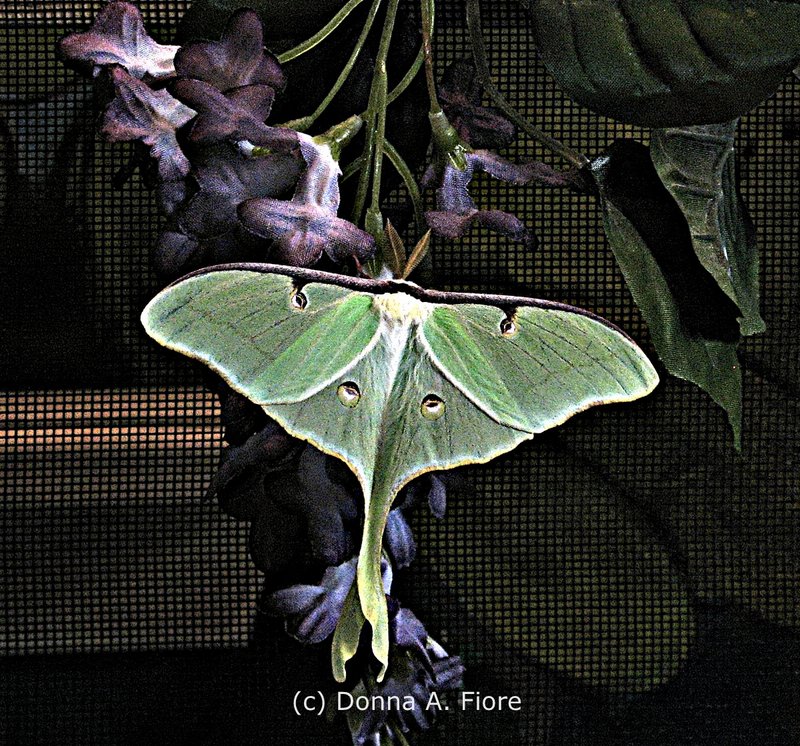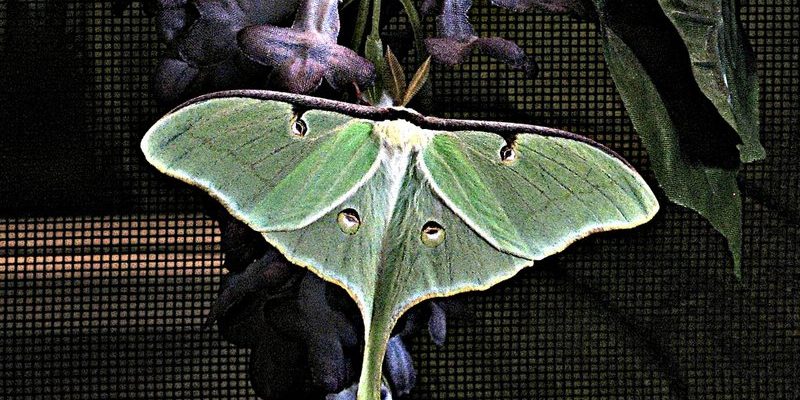
When we think about communication, we often picture humans talking or texting. But for luna moths, it’s a whole different ball game. They have their own special ways of sending messages. Imagine sitting in a quiet café, and everyone around you is using hand signals instead of words. That’s kind of what it’s like for these moths. They communicate using a combination of scents, sounds, and even body movements. So, grab your coffee, and let’s uncover the secrets of luna moth communication!
The Role of Pheromones in Communication
One of the most fascinating aspects of luna moth communication is their use of pheromones. Think of pheromones as the moths’ version of a love letter, but instead of paper, it’s all about scents. When a female luna moth is ready to mate, she releases specific pheromones into the air. These chemical signals can travel quite a distance, letting male moths know she’s in the vicinity.
The males have incredibly sensitive antennae that can detect these pheromones from far away. It’s almost like having a superpower! Once they catch a whiff of the scent, they use it to locate the female. Here’s a little fun fact: a male luna moth can sense pheromones from over a mile away. That’s like being able to smell your favorite food cooking in a neighbor’s kitchen!
But these pheromones are not just a one-way street. They also play a role in mating rituals. Once a male arrives, he’ll often engage in displays to show his interest. This can include fluttering around or gently tapping his wings. It’s his way of saying, “Hey there! I got your message!”
Visual Signals and Body Language
While scents are crucial for luna moths, visual signals are also important, especially during mating. Imagine going to a party where the lights are dim, but you need to find your friend. You might wave or flash your phone’s light. Luna moths do something similar.
When a male approaches a female, he often spreads his wings wide to show off their beautiful coloration and patterns. This isn’t just for looks; it’s a part of their mating dance. The female can assess the male’s fitness and health based on these displays. A vibrant display can signal that he’s strong and healthy—just the kind of mate she wants.
Interestingly, luna moths also have eye spots on their wings. These spots can confuse predators, but they may also play a role in attracting mates by adding to the visual show. It’s like wearing a flashy outfit to catch someone’s attention at a dance!
The Sound of Communication
While luna moths are primarily known for their stunning visuals and fragrances, they also use sound in subtle ways. Although they don’t produce loud noises like some insects, they communicate through wing movements that create soft sounds. It’s as if they have their own secret language.
When males are flying around females, they often flap their wings in particular patterns. The vibrations created can send signals to nearby moths, indicating their presence and intentions. In a way, it’s like the gentle rustling of leaves—subtle, but it carries a message.
These sounds can also help establish territory. Male luna moths, much like musicians in a band, can signal to others when they’re nearby and ready to mate. It’s this mix of pheromones, visual cues, and soft sounds that creates a lively atmosphere for these moths.
Mating Behavior: A Coordinated Dance
When it comes to mating, luna moths put on quite a show. The process is a complex interaction of signals and responses. Once a male finds a female, the real fun begins. He’ll perform a sort of aerial dance to impress her.
The female will respond to his displays and pheromones, often encouraging him to come closer. This back-and-forth interaction can last from a few minutes to several hours. You might think of it like a slow dance, where both partners are tuned into each other’s movements and signals.
After some time, when the female feels ready, she may settle down, signaling the male to come in for mating. Their bodies align perfectly, and this crucial moment can lead to the creation of the next generation of luna moths. It’s a beautiful blend of communication and connection!
Interactions with Their Environment
Luna moths don’t just communicate with each other; they also interact with their environment. Their ability to blend into their surroundings is a vital survival skill. Think of them as nature’s stealth players. During the day, when they’re resting, their green and brown coloration helps them remain hidden among leaves and branches. This camouflage is a smart way to avoid predators!
By being aware of their surroundings, luna moths can also respond to other environmental signals. For instance, changes in temperature, humidity, or even the presence of light can influence their activities. If they sense a predator nearby—like a hungry bird—they’ll stay still, blending in and waiting for the danger to pass. This blend of communication with their environment plays a critical role in their survival.
What’s more, luna moths also interact with their food sources, mainly the leaves of certain trees. They have a keen sense of taste, allowing them to find the best places to lay eggs. Mating and feeding are interconnected; the choices they make in their environment impact their interactions and communication.
Challenges in Communication and Interaction
Despite their impressive methods of communication, luna moths face several challenges. One major issue is habitat loss. As natural areas shrink, the opportunities for these moths to communicate can diminish. Fewer trees mean fewer places for them to rest and interact, leading to potential declines in populations.
Another concern is light pollution. Urban areas filled with bright lights can disrupt their natural behaviors. Since luna moths are nocturnal, they rely on darkness to guide them. Bright lights can confuse them, attracting them to unnatural areas where they can easily become prey. This can affect their mating opportunities and overall survival.
Finally, climate change poses a threat. As temperatures and weather patterns shift, the timing of mating seasons may be thrown off. If males can’t find females during their peak mating times, it can lead to reduced reproduction rates. This interconnected web of environmental and communication challenges highlights the delicate balance luna moths maintain in their lives.
In the end, the way luna moths communicate and interact is a beautiful tapestry woven from scents, signals, and synchronous movements. From the moment they release pheromones to the intricate dances during mating, each aspect plays a crucial role in their lives. It’s a reminder of how complex and interconnected nature can be, even in the smallest of creatures.
So next time you see a luna moth, take a moment to appreciate not just their beauty, but also the fascinating world of communication happening in the shadows. They may seem like simple insects, but their interactions are anything but ordinary. The dance of the luna moth is a lovely reminder that even in the quiet of the night, life is full of whispers and wonders.

